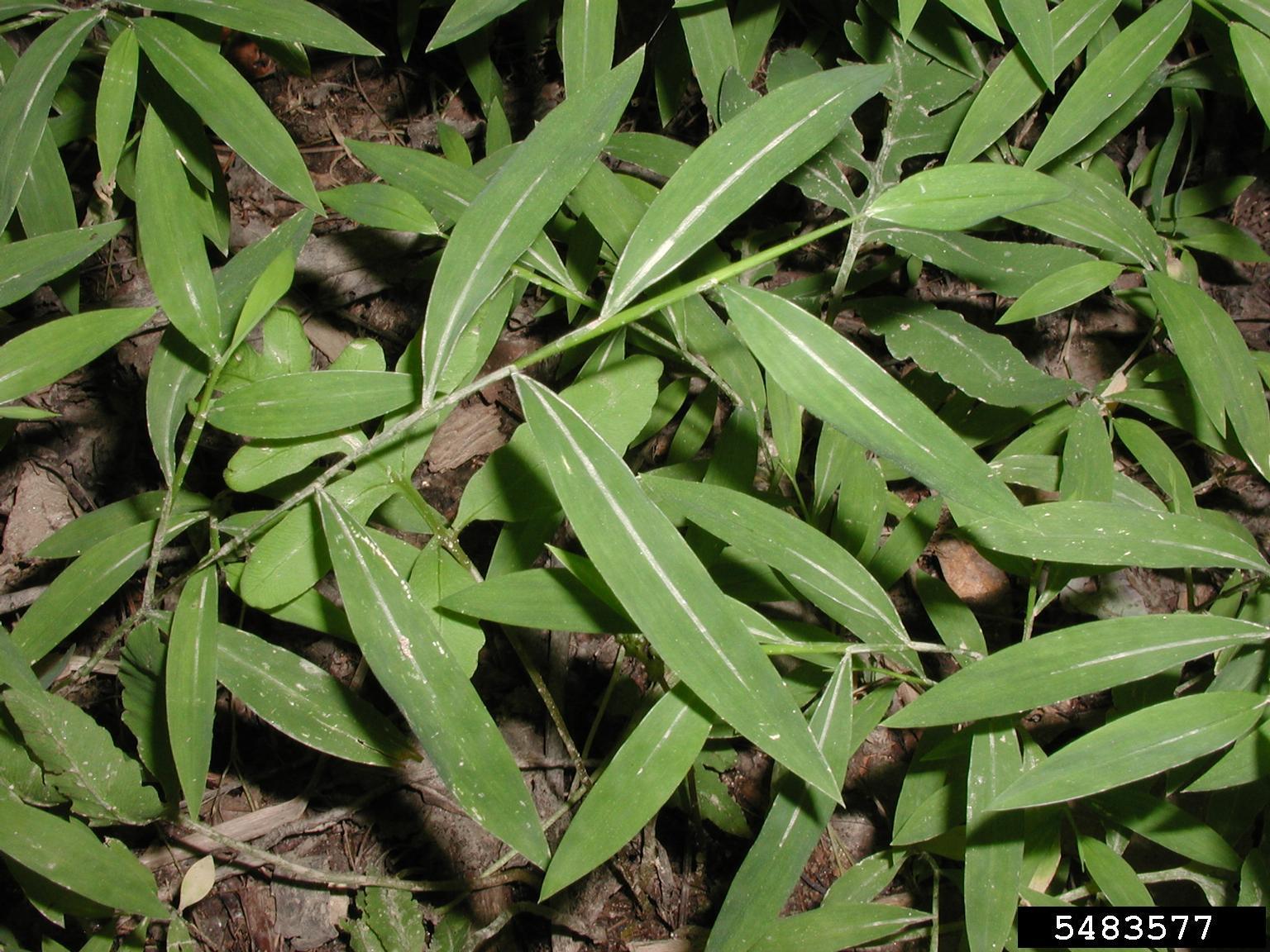Management of Japanese stiltgrass
In ornamental landscape beds
Prevent plants from going to seed. Japanese stiltgrass can be pulled out by hand easily. Do not compost plants with seed heads. Learn more about managing weeds without chemicals.
In forested areas
Hand pull Japanese stiltgrass, or if the area of infestation is large, cut it back with a mower or string trimmer. Do this in late summer before it goes to seed in the fall. Read Invasives in Your Woodland: Japanese Stiltgrass.
In lawns
-
Mechanical management
Hand pulling or using an appropriate weeding tool are the primary means of mechanical weed control in lawns. This is a viable option at the beginning of an infestation and on young weeds. Hand pulling when the soil is moist makes the task easier. Weeds with tap roots like dandelions or have a basal rosette (leaves clustered close to the ground) like plantain are easier to pull than weeds such as Bermudagrass (wiregrass) or creeping Charlie (ground ivy) that spread with stolons or creeping stems that root along the ground.
-
Chemical prevention and treatment in Lawns
Herbicides should be used as a last resort because of the potential risks to people, animals, and the environment. Be aware of these precautions first.
Use a granular (apply with a spreader), selective, preemergent herbicide. Apply a preemergent without nitrogen fertilizer. Look for the active ingredient: Prodiamine (Barricade) or other preemergents labeled for crabgrass control. Apply in early spring (March) before it germinates. It germinates earlier than crabgrass so to prevent Japanese stiltgrass the preemergent needs to be applied a couple of weeks earlier than for crabgrass prevention.
Rainfall or irrigation is required to dissolve the herbicide which is then absorbed into the upper portion of the soil and forms a barrier that kills weed seedlings. Preemergent grass herbicides have a residual activity that lasts for several weeks after application. High temperatures and rainfall will decrease the length of time they remain at sufficient concentration to be effective.
Tips for herbicide application:
-
If planning soil disturbance, such as aeration, do it before application.
-
Apply prior to seed germination which begins, in early spring a couple of weeks before crabgrass seeds germinate.
-
Water after application, according to label.
-
A second application may be possible, usually 6-8 weeks later (see product label).
-
Consult label for specific waiting period between application and overseeding.
If Japanese stiltgrass is present in your lawn, a postemergent herbicide labeled to control annual grass weeds like crabgrass can be used to spot treat young weeds. Herbicides do not work well on mature plants. Look for the active ingredient Fenoxaprop.
Lawn Herbicides for Weed Management
